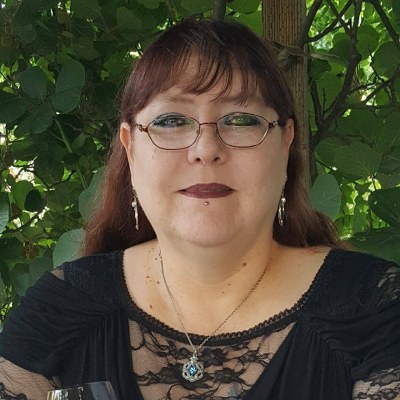The Cabinet
by Lindsay M. Chervinsky
~~~~~~~~~~~~~
GENRE: History
~~~~~~~~~~~~~
BLURB:
The US Constitution never established a presidential cabinet―the delegates to the Constitutional Convention explicitly rejected the idea. So how did George Washington create one of the most powerful bodies in the federal government?
On November 26, 1791, George Washington convened his department secretaries―Alexander Hamilton, Thomas Jefferson, Henry Knox, and Edmund Randolph―for the first cabinet meeting. Why did he wait two and a half years into his presidency to call his cabinet? Because the US Constitution did not create or provide for such a body. Washington was on his own.
Faced with diplomatic crises, domestic insurrections, and constitutional challenges―and finding congressional help lacking―Washington decided he needed a group of advisors he could turn to. He modeled his new cabinet on the councils of war he had led as commander of the Continental Army. In the early days, the cabinet served at the president’s pleasure. Washington tinkered with its structure throughout his administration, at times calling regular meetings, at other times preferring written advice and individual discussions.
Lindsay M. Chervinsky reveals the far-reaching consequences of Washington’s choice. The tensions in the cabinet between Hamilton and Jefferson heightened partisanship and contributed to the development of the first party system. And as Washington faced an increasingly recalcitrant Congress, he came to treat the cabinet as a private advisory body to summon as needed, greatly expanding the role of the president and the executive branch.
On November 26, 1791, George Washington convened his department secretaries―Alexander Hamilton, Thomas Jefferson, Henry Knox, and Edmund Randolph―for the first cabinet meeting. Why did he wait two and a half years into his presidency to call his cabinet? Because the US Constitution did not create or provide for such a body. Washington was on his own.
Faced with diplomatic crises, domestic insurrections, and constitutional challenges―and finding congressional help lacking―Washington decided he needed a group of advisors he could turn to. He modeled his new cabinet on the councils of war he had led as commander of the Continental Army. In the early days, the cabinet served at the president’s pleasure. Washington tinkered with its structure throughout his administration, at times calling regular meetings, at other times preferring written advice and individual discussions.
Lindsay M. Chervinsky reveals the far-reaching consequences of Washington’s choice. The tensions in the cabinet between Hamilton and Jefferson heightened partisanship and contributed to the development of the first party system. And as Washington faced an increasingly recalcitrant Congress, he came to treat the cabinet as a private advisory body to summon as needed, greatly expanding the role of the president and the executive branch.
~~~~~~~~~~~~~
Excerpt Two:
When Washington and Knox arrived at Federal Hall at 11:30 a.m., the doorkeeper announced their arrival. Washington sat at the front of the chamber, and Knox took the chair to his right. Washington handed his remarks to Knox, who in turn handed them to Vice President John Adams. Adams read the statement, but as Senator William Maclay from Pennsylvania recalled, the senators could “not master . . . one Sentence of it.” Adams wasn’t known for his public speaking skills, but the senators’ struggles weren’t entirely his fault. The Senate gathered for their work in the large chambers that occupied the first floor of Federal Hall. Because of the August heat in New York City, the doorkeeper had opened the windows in search of a cooling breeze. But along with fresh air, noise from Wall Street’s pedestrians, carriages, peddlers, and horses flowed into the Senate chambers. The clamor overpowered Adams’s voice, so few senators could make out the words that Washington had carefully crafted. After a few complaints, Adams repeated the speech from the beginning. Washington’s remarks offered a brief synopsis of the current diplomatic state between the United States and the Southern Indians, and posed seven questions for the Senate to answer with an aye or a no.
Adams finished his recitation and sat. The seconds ticked by as the senators remained in awkward silence. A few shuffled papers or cleared their throats. Maclay speculated in his diary that his colleagues were so intimidated by Washington’s presence in the Senate chamber that they cowered in shameful silence. Eager to show that they could be active participants in the creation of foreign policy, Maclay stood up and suggested referring Washington’s seven questions to committee for discussion in detail. Washington lost his temper, stood up, and shouted, “This defeats every purpose of my coming here!” The senators fell into a stunned hush before Washington acquiesced to Maclay’s suggestion and offered to return to the Senate a few days later. Although he did return the following Monday, his first visit to the Senate was an inauspicious start to the executive-legislative relationship. As he returned to his carriage, Washington muttered under his breath that he would never return for advice. He kept his word—August 22, 1789, was the first and last time he visited the Senate to request guidance on foreign affairs. Unfortunately, the diplomatic challenges facing the United States during the Washington presidency were just beginning...
~~~~~~~~~~~~~
AUTHOR Bio and Links:
Lindsay M. Chervinsky, Ph.D. a historian of Early America, the presidency, and the government – especially the president’s cabinet. She shares her research by writing everything from op-eds to books, speaking on podcasts and other media, and teaching every kind of audience. She is Scholar-in-Residence at the Institute for Thomas Paine Studies and Senior Fellow at the International Center for Jefferson Studies. Previously, she worked as a historian at the White House Historical Association. She received her B.A. in history and political science from the George Washington University and her M.A. and Ph.D. from the University of California, Davis. She has been featured in the Law and History Review, the Journal of the Early Republic, TIME, and the Washington Post. Her new book, The Cabinet: George Washington and the Creation of an American Institution, was published by the Belknap Imprint of Harvard University Press on April 7, 2020.
The New Criterion recently said of her book, “Fantastic…Unlike many works of popular history, The Cabinet never feels like hagiography. It lacks the reverence of works like Joseph J. Ellis’ Founder Brothers or the revisionist obsequiousness that now greets Alexander Hamilton’s name on stage…Chervinsky exemplifies the public-history ethos in her new book. The writing is clear and concise…She takes what could have been a dry institutional and political history of the Early Republic and transforms it into a compelling story of people and places.”
When she isn’t writing, researching, or talking about history, she can be found hiking with her husband and American Foxhound, John Quincy Dog Adams (Quincy for short).
Facebook: http://www.facebook.com/lmchervinsky
Website: http://www.lindsaychervinsky.com/
Interview with Lindsay M. Chervinsky
1. Do your characters seem to hijack the story or do you feel like you have the reins of the story?
I hope the characters drive the story. While most readers will know how it ends (it is a history book after all!), I tried to write the book without a sense of forgone conclusion. I wanted to readers to immerse themselves in the anxiety, uncertainty, and possibility of the 1790s and follow along as the main cast of characters responded to the very really challenges in front of them.
2. Convince us why you feel your book is a must read.
2020 is a very intense year and it’s more important now than ever that we understand our political system and the origins of our government. We can’t understand the presidency without studying the cabinet, because it’s central to every aspect of the executive branch. While the cabinet is such a public and powerful institution, no one has written about its beginnings! In 1912, Henry Barrett Learned published a book that examined the legislation that created each department, but that’s it. If you want to know the story, The Cabinet is the best place for that information.
3. Have you written any other books that are not published?
No, I try and use all of my words! Even if a section gets cut from one publication or another, I almost always find a use for it in an article, opinion editorial, blog post, or something else. I am working on book two now, but that’s just in the beginning phases.
4. Pen or type writer or computer?
Pen and paper to start outlining or when I’m particularly stuck on a passage or stuck with organizing a section (blue G2 pen, .38 width ONLY and white legal pad). Then I switch to computer. Two monitors are life-changing! Especially for historical work, because I can have my sources or notes on one screen, and my document on the other.
5. Anything you would like to say to your readers and fans?
I’m so grateful for their support during the pandemic! Launching a book at this time has been a little brutal, and every message, email, post, and review really means the world to me. While it can’t completely replace in-person signings and events, it’s great to connect with readers any way we can!
~~~~~~~~~~~~~
GIVEAWAY INFORMATION and RAFFLECOPTER CODE:
Lindsay M. Chervinsky will be awarding a $50 Amazon or Barnes and Noble GC to a randomly drawn winner via rafflecopter during the tour.
Follow the tour and comment; the more they comment, the better their chances of winning. The tour dates can be found here:














